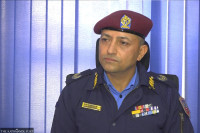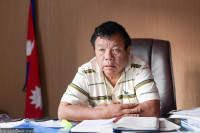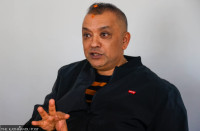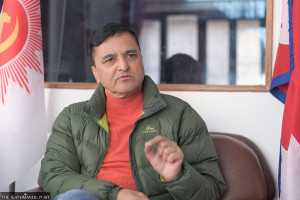Interviews
Most of the air pollution in Kathmandu is locally generated
These days, the quality of Kathmandu’s air is compared to that in some of the world’s most polluted cities like New Delhi and Beijing.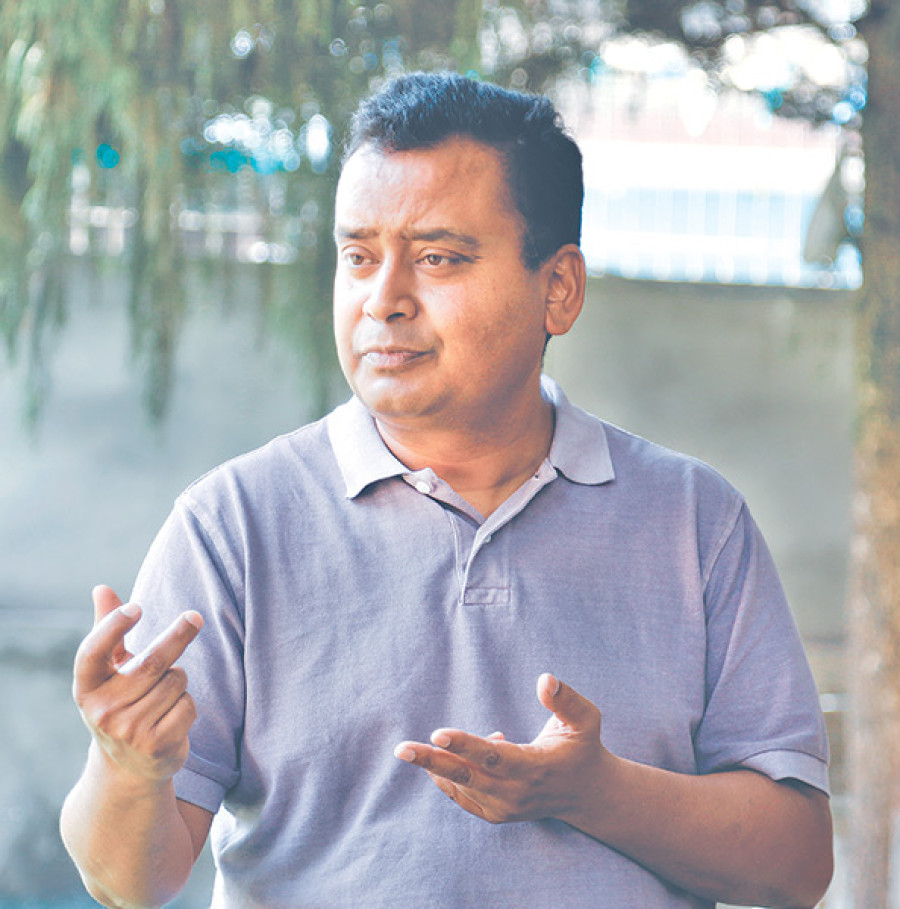
These days, the quality of Kathmandu’s air is compared to that in some of the world’s most polluted cities like New Delhi and Beijing. Last year’s Environment Performance Index put Nepal at 177 among 180 countries in terms of air quality. Traffic congestion in Kathmandu has also become terrible in recent times. Shashwat Acharya spoke to Bhushan Tuladhar, an environmentalist and technical advisor for South Asia, UN-Habitat, about the level of air pollution in Kathmandu and the ways to control it, including adopting a robust transportation system.
Several recent studies show that Kathmandu’s air pollution level is high. How bad is the situation?
It’s very bad. Our pollution level is five times higher than the World Health Organisation’s guidelines, which are based on the impact of a city’s pollution on human health. It’s important to note that the pollution level the WHO takes into account is the average value. The actual value keeps fluctuating.
The peak is usually around January. And the pollution level drops significantly—by around a third—in the monsoon. There is variation in terms of place and time of the day as well; the pollution level is higher in areas close to the roads and in the early hours of the day.
Recently there was news that the monitoring device in Lumbini recorded higher levels of pollution than the one in Ratnapark in Kathmandu. What does that indicate?
There are a lot of factories in the vicinity of Lumbini. Additionally, the wind brings pollution from across the border to Lumbini. By contrast, most of the pollution in Kathmandu is locally generated. The problem for us is that about 80 percent of the rain, which flushes pollution, is during the monsoon. So the rest of the year witnesses high levels of pollution, particularly the winter when the flow of wind is low and when the operation of brick kilns is at a maximum.
We obviously cannot control the amount of rain and the flow of wind. What can we do better?
We can get the brick kilns to not operate in the winter. But more importantly, almost all studies have shown that the main contributing factor towards pollution is vehicular emission. People are complaining about the dust, and rightly so. It is visible and it is irritating.
But it is the smoke emitted by vehicles that is much more harmful to health. The fine particles in the smoke, which have toxic chemicals, go deep inside the body and they kill you.
The ongoing road expansion drive and the Melamchi project will attract more people to the city.
They will encourage more people to buy private vehicles. Everybody, including the disabled, have the right to mobility. The government should focus on mobility plans and not on road expansion. When the Ring Road is expanded to eight lanes, two of them should be reserved for public vehicles—perhaps even for clean vehicles such as trolley buses.
That will allow the public vehicles to move faster than the private ones, and incentivise people to use the former. An efficient transport system is crucial for any city. Getting stuck in traffic for long is bad for the environment, for the health and for the economy.
What should be done for an efficient transport system?
The government, in the past, did run some public vehicles like Sajha buses and trolley buses. They failed not due to technical reasons but due to bad management. The government should govern public transportation, not manage it. That private players are investing in public transport is good, but that the government is not regulating them properly is bad.
The 700 or so Safa tempos are providing clean transport at a very reasonable price without any subsidy from the government. If the government helps with the initial investment in clean technology, the private sector can play a valuable role.
But no matter how clean or efficient the public transportation system is, it won’t take you from door to door. People will have to do some walking. In Kathmandu, 40 percent of the transportation happens by foot. Walking should be promoted—by making it more convenient.
Currently, pedestrians are the victims of about 50 percent of all road accidents. Pavements have to be widened. You have to put people, not cars, at the centre of transportation planning. What is happening is the opposite; roads are being expanded at the expense of pavements.
Cycling needs to be made convenient and safe as well. In Kathmandu, the average commute is about five kilometres. And the conditions here are ideal for cycling. Neither is it scorching hot, not does it snow.
Those who argue there isn’t enough space for bicycle lanes in Kathmandu should be reminded that a bicycle lane requires a width of only 1.2 metres. A car, by contrast, requires a lane of 3.5 metres width. Space is not a constraint. And neither is money; billions of rupees from tax levied on petrol or diesel is sitting idle. The only constraint is attitudinal.
You’re implying the government’s response to Kathmandu’s apparently alarming level of air pollution and traffic congestion lacks seriousness?
It’s basically ad hocism. There is dust now, so the government will sprinkle water here and there. But look at the bigger picture. There’s a six lane road connecting Kathmandu to Bhaktapur for cars, but not a single one for bicycles. A person who wants to cross the road has to look to the right and to the left and then run, as if they’re committing a crime.
I’m afraid the situation is going to be worse in the eight-lane Ring Road. Between Kalanki and Koteshwor—a distance of about 11 km—there are just three overhead bridges. There is no public discussion on such a huge project. We do not even know what the road is going to look like. Will our children be able to cross that road safely?
The government thinks the solution to traffic congestion is road expansion. That’s like buying a pair of bigger-sized pants to deal with one’s problem of obesity. Nowhere in the world has road expansion solved the problem of traffic jams. It’s not that the government isn’t doing anything. It’s doing the wrong thing.
Walking, cycling or using public transport is fine, but many people still aspire to own a car.
I’m not saying cars aren’t important. But they are just a means of transportation for people to get from A to B. Look at the core areas like Thamel. Ask any tourist there what their main problem is, and they’ll say it’s cars and pollution. If you want to make Thamel a touristic paradise, get the cars out. It’s not that we’ve never thought of the problem.
The first master plan for Kathmandu was published in 1969. There’s a clause in it that says the core areas of Kathmandu would be made vehicle-free. But we never implemented it.
I’m not against development. But development doesn’t mean more cars or highways. It means having a quality of life that I can enjoy. It means being able to take my kid to a park.
Are there international examples that Kathmandu can learn from?
No two cities are exactly alike, but Kathmandu can learn from many cities. London’s smog killed thousands of people once. They invested a lot in pollution control measures. Bogota went from a car-centred city to a people-centred one. A mayor of Bogota said that a developed city is not where the poor ride cars; it’s where the rich use public transport. In Hong Kong, 85 percent of the trips are in public transportation; in Kathmandu, it’s only 27 percent. If we can raise that to 54 percent, we can all benefit.
Investing is public transport is also a part of being a democracy. When a person riding a Rs3,000 bicycle gets the same priority as a person driving a Rs3,000,000 car, that’s democracy. There are more bicycles than cars in Copenhagen. Another quote from the mayor of Bogota that I think is deep is, “the depth of democracy can be measured by the width of the footpath.” Our situation is not out of control. If there is political will, a lot of the bad effects can be reversed.
How did you view the recent ban on old vehicles?
It got rid of a few thousand vehicles. That’s something, but it won’t help much. In most cities, 20 percent of the vehicles cause around 50 percent of the pollution. I’m not saying they should be got rid of, but they should be fixed. The air filters should be changed regularly. The police did a wonderful thing checking drunk driving; now they have to do the same checking vehicular emission. They should implement an efficient green sticker system.
What can we do as individuals?
We can start walking or cycling a bit more. Or increase the demand for clean transport by riding Safa tempos. If you have a vehicle, get it fixed. Treat household garbage properly. Learn about environmental issues. Use face masks. Avoid polluted areas, particularly in the mornings.
And finally, make noise. Question policy makers. Now with the local elections coming up, ask people who’re asking for your votes what their stand on pollution and transportation is. A lot of power is vested in the local units; vote for the right person.




 20.12°C Kathmandu
20.12°C Kathmandu

